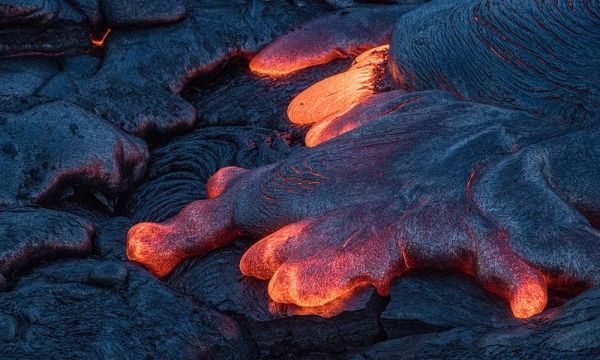Volcanic hot spots such as the ones that created the Hawaiian Islands have long been considered stationary points, created by processes deep within the earth’s interior.
Using new paleomagnetic data and analyses, researchers John Tarduno, a professor of earth and environmental sciences at the University of Rochester; Richard Bono, a former post-doctoral research associate in Tarduno’s lab and now a post-doctoral researcher at the University of Liverpool; and Hans-Peter Bunge, a geophysicist at Munich University, provide conclusive evidence that hot spots are not fixed but are moving. The research, published in Nature Communications, solves a major debate about the origin of the large-scale structure of the earth’s surface and deep interior.
The earth’s lithosphere is the outermost shell of our planet, composed of seven major puzzle pieces known as tectonic plates. While today each of the tectonic plates roughly encompasses one of the seven continents and the Pacific Ocean, scientists believe the pieces once fit together to form supercontinents. Earth’s last supercontinent, Pangea, began to break apart about 175 million years ago. Much of the earth’s seismic activity, including earthquakes and volcanoes, occurs at the boundaries of the tectonic plates.
But there are other regions on earth characterized by volcanic activity, independent of the plate boundaries. Researchers refer to these areas as hot spots. Hot spots are thought to develop above abnormally hot upwellings of magma in the earth’s mantle called mantle plumes. Although researchers cannot travel to the mantle to observe these processes, they are able to infer hot spots because of the volcanism that develops when the magma pushes through the lithosphere. The most active hot spots include those beneath Yellowstone, the Galapagos Islands, Iceland, and Hawaii.
Continue reading at University of Rochester.
Image via Getty Images.


